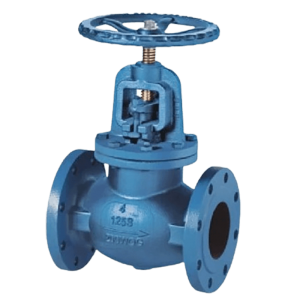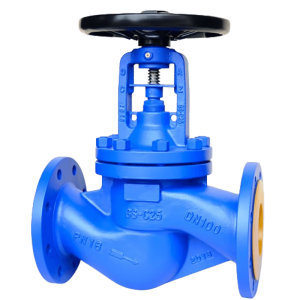In the complex world of fluid management, particularly in sectors like marine engineering, chemical processing, and power generation, the choice of the right valve can dramatically impact not only operational efficiency but also safety and environmental compliance. Among the vast array of industrial valves available, the globe valve and the bellow seal globe valve are two essential variants used for throttling and precise flow regulation.But what truly sets them apart? And when does it become critical to choose one over the other?
Understanding the Standard Globe Valve
A globe valve is a linear motion valve designed primarily for regulating flow. Named after its globe-shaped body, it features a disc that moves perpendicular to the seat, allowing for fine throttling capability. Thanks to their reliability and moderate cost, globe valves are widely used in boiler feedwater systems, cooling water circuits, and fuel oil systems.
Key Features
-
1.Designed for on/off and flow modulation
-
2.Relatively tight shutoff
-
3.Ideal for applications involving non-corrosive fluids
-
4.Simple to maintain and widely available
However, one challenge persists: stem packing leakage over time. In high-pressure or high-temperature conditions, the gland packing around the valve stem can degrade, allowing media to escape—posing safety and environmental risks.
What Makes Bellow Seal Globe Valves Different?
A bellow seal globe valve takes the same operating principle as a globe valve but introduces a game-changing enhancement: a metallic bellows seal welded to both the valve stem and the bonnet. This design creates a hermetic seal, eliminating any possibility of fluid leakage along the stem—a vital feature for toxic, radioactive, or flammable applications.
Key Advantages
-
1.Zero stem leakage—ideal for hazardous fluids like ammonia, hydrogen, or acids
-
2.Extended operational life with minimal maintenance
-
3.Complies with fugitive emission and ISO 15848 standards
-
4.Reduces downtime and enhances system integrity
Bellow Seal Globe Valve VS Globe Valve
| Feature | Globe Valve | Bellow Seal Globe Valve |
|---|---|---|
| Seal Type | Gland packing | Stainless steel bellows |
| Leakage Risk | Medium (increases over time) | Extremely low |
| Maintenance Frequency | Moderate to high | Low |
| Application Suitability | General fluid systems | Critical systems with hazardous media |
| Environmental Compliance | Limited | High (emissions-tight) |
| Initial Cost | Lower | Higher |
| Lifecycle Cost | Higher due to maintenance | Lower due to durability |
Why the Choice Matters for Marine Applications
In marine environments, valves are constantly exposed to saltwater, vibrations, and extreme temperatures. Any leak—especially in fuel supply, cooling water, or fire suppression systems—can lead to catastrophic consequences.
Standard globe valves are still common in non-critical applications, but bellow seal globe valves are rapidly becoming the preferred choice for:Engine room fuel lines,Ballast water systems,High-temperature steam applications and Cargo chemical piping
Post time: Apr-23-2025


